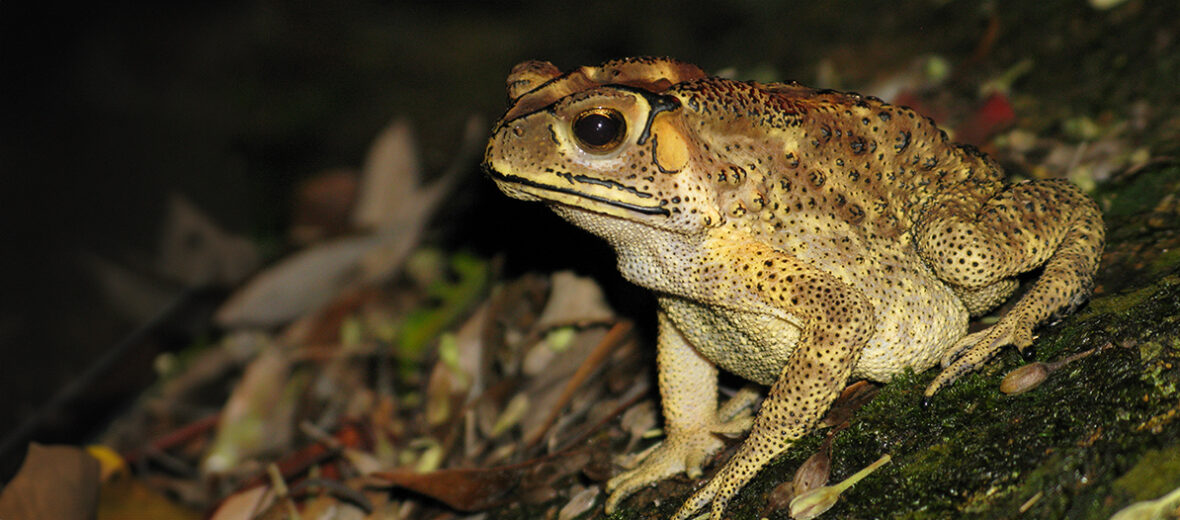
The common Indian toad, aka Asian black-spined toad, Asian toad, black-spectacled toad, Asian common toad, common sunda toad, or Javanese toad, can be found in Bangladesh, Cambodia, China, Hong Kong, Macao, India, Indonesia, Laos, Madagascar, Malaysia, Myanmar, Nepal, Pakistan, Singapore, Sri Lanka, Taiwan, Thailand, and Vietnam. Even though they face the threats of habitat division by roads and railroads, which also results in vehicle strike (being hit by vehicles); hunting; trapping; and pollution, these toads are abundant and spreading. They are listed as Least Concern by the IUCN.
First the Stats…
Scientific name: Duttaphrynus melanostictus
Weight: Up to 6+ ounces
Length: Up to 8 inches
Lifespan: Up to 10 years
Now on to the Facts!
1.) The males have a subgular vocal sac that is used to call to females.
2.) Males also possess black nuptial pads on their forelimbs that are used to grasp the female in amplexus (where the male climbs onto the female’s back and maintains a firm grip until mating has concluded).
3.) They prefer lowland habitats, from upper beaches and riverbanks on over to human-prevelant agricultural and urban locations.
4.) These toads can be found from sea level up to 5,900 foot elevations.
5.) Common Indian toads prey on a wide variety of invertebrates, including: beetles, worms, termites, moths, and even scorpions.
But wait, there’s more on the common Indian toad!
6.) Like so many other toads, they are nocturnal (active at night).
7.) Like all toads, they possess parotid glands that produce a milky white toxin when the toad is harassed or threatened.
Did you know…?
The poison produced by these toads is only effective when ingested or introduced into the blood stream. The effects of poisoning in animals consists of vomiting, foaming at the mouth, and pawing at the face and eyes. In humans, the effects are typically upset stomach, vomiting, and overall lousy feeling.
8.) Females lay upwards of 40,000 eggs per clutch.
9.) Eggs are deposited in slow moving rivers and streams, lakes, and ponds.
10.) Tadpoles metamorphose into toadlets in up to 2 weeks.
But wait, there’s still more on the common Indian toad!
11.) These toads are considered to be invasive in parts of their range.
12.) Large birds, snakes, and monitor lizards all prey on these toads.
Now a Short Common Indian Toad Video!
Be sure to share & comment below! Also, check out the Critter Science YouTube channel. Videos added regularly!
Want to suggest a critter for me to write about? Let me know here.
Some source material acquired from: Wikipedia & IUCN
Photo credit: Lokionly



